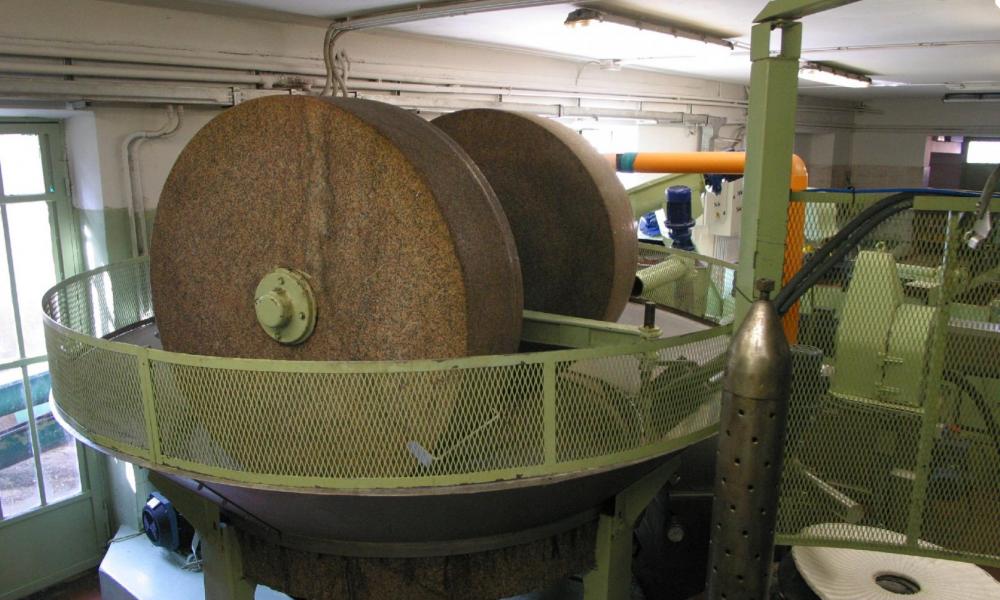
The olive oil production phases begin with the harvesting of the olives,
which must be done in the correct period so that they have reached the
right ripeness and using suitable manual and mechanical tools so as not
to damage the drupe and therefore the quality of the oil itself. After
being harvested the olives are transported to the oil mill where they
are weighed and recorded and then processed.
Ideally, the
olives should be pressed immediately after harvesting in order to
optimise their conservation. This is not always possible, so we use
cracked baskets that allow complete aeration of the olives, protecting
their quality.
The phases of their processing can basically be divided into 5 different steps:
The washing
The olives, once arrived at the mill and
weighed before being washed, are poured into a loading hopper (a sort of
funnel used especially for agricultural products) whose task is to
transfer all the olives to the conveyor belt that leads them to the
defoliator that separates the olives from the leaves.
The crushing
The second stage involves crushing the olives
to obtain a dense, creamy paste with a pungent smell. The crushing uses
mechanical disks that crush the drupes without causing friction and thus
avoid heating them: in this way it avoids starting oxidation mechanisms
(activated by heat) while maintaining the quality of this paste, formed
by the skin, pulp and stone of the olives.
The pressing methods are:
continuous cycle in modern mills and discontinuous cycle in traditional
mills using granite millstones that are able to crush the olives thanks
to their weight. In modern mills, on the other hand, mechanical disks
are used which, rotating on the olives, allow them to be crushed and
obtain a homogeneous paste in a short time, thus avoiding oxidation
which could deteriorate the final product.
The paste obtained is ready for the third stage: the gramolatura.
Gramolatura
The dough is transferred to the gramolatrice
where, thanks to the presence of mechanical arms, it is stirred and
gently heated; however, the temperature must never exceed 27/28°C. This
phase is the most delicate of the entire oil production chain, because
at this moment the oil-water emulsions break: the oil droplets are
released from the water and form larger drops of oil that float on the
water itself. This breakage takes place inside watertight tanks to
protect the oil from oxidation; moreover, the gramolatura phase must be
carried out in 30 minutes, otherwise there is a risk of obtaining a
product with high acidity and irreparably compromised organoleptic
properties.
The pressing
The pressing is the last of the phases
leading to the production of the oil; it can be hot or cold. In this
step all that is done is to separate the three components that make up
the paste obtained during the gramolatura, namely:
• the oily must
• pomace
• vegetation water


